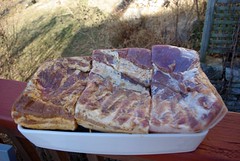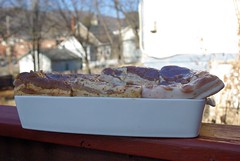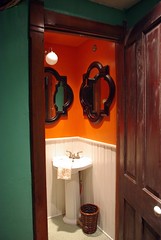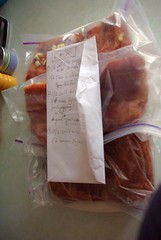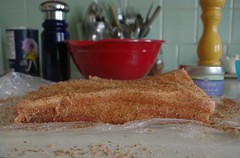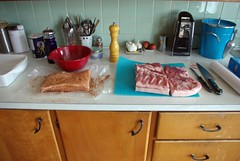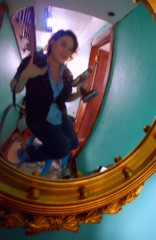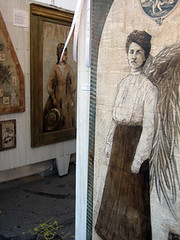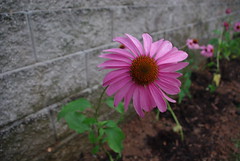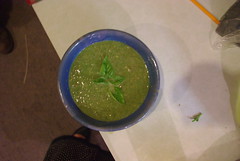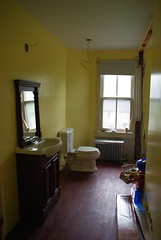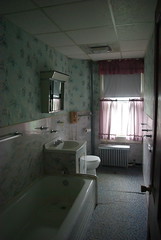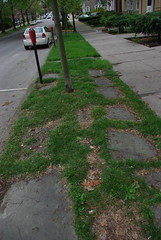First, we do not have a smoker. I have been assured that as someone with a pretty fantastic grill that a smoker is overkill. In fact, there are tons of web sites dedicated to using your grill as a smoker. I would not reject this concept out of hand, since I imagine that someone must be able to do it successfully. However, that person was not me.
I followed the steps necessary to use my grill as a smoker, but when Chris showed up very enthusiastically waving a bag of giant hunks of hickory I realized that we would not be able to have them become fully soaked -- they simply were too big. At this point, I should have tried a plan b. I did not.
This all seemed fine initially. However, as I was in the kitchen about half an hour later, I was surprised to hear the dogs barking as I also saw Chris run through the kitchen toward the back yard. The grill was functioning as a smoker -- perhaps too well, as hickory-scented flames were licking the roof of the grill and sending smoke out in all directions.
So, a tad chastened, I went to plan b. Which involved taking the bacon slabs inside, putting them in the oven, and putting them on the type of low heat that they would have been exposed to on the grill. And, um, they got exposed to the hickory, right?
The final results? Delicious! Chris and I broke out some apples, a slab of brie, and all three cures. Surprisingly, the brown sugar/salt-cured mix was probably the best, with the lightest flavor. A close second was the salt and Two Sisters cure, which also had a great smoky flavor.
So, the moral of the story: Even if you almost burn your house down, bacon-making is easy and delicious. Or something.
